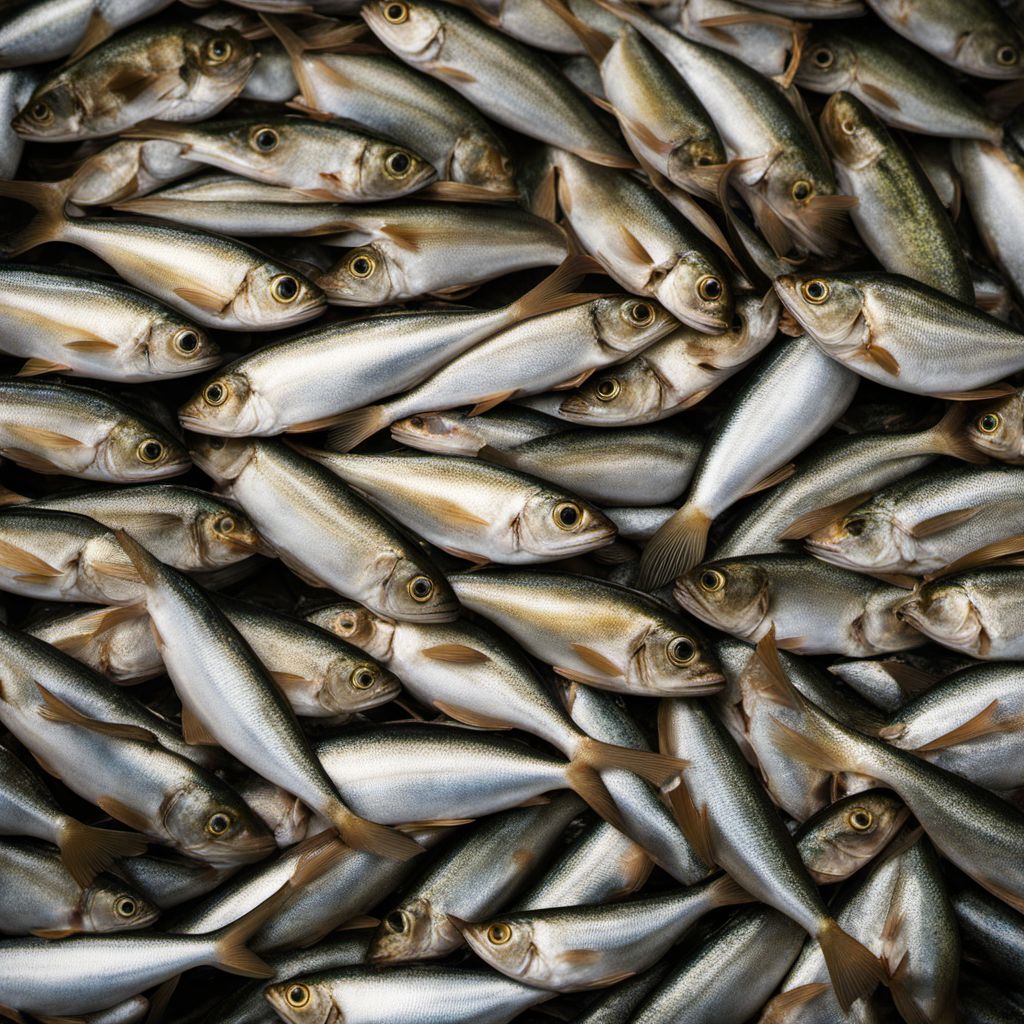
Ingredient
Sardines and sardine-type fishes
Tiny Fish with Big Flavor
Sardines and sardine-type fishes are characterized by their small size, silver skin, and rich, oily flesh. They have a distinct flavor that is often described as robust, savory, and slightly briny. Their texture can vary depending on the specific type of fish, ranging from tender and delicate to firm and meaty.
Origins and history
Sardines have a long history dating back to ancient times, where they were a staple food in Mediterranean and coastal regions. They were highly valued for their abundance, nutritional value, and ease of preservation. Today, sardines and sardine-type fishes are enjoyed worldwide and are particularly popular in Mediterranean, Asian, and Latin American cuisines.
Nutritional information
Sardines and sardine-type fishes are a nutritional powerhouse, packed with omega-3 fatty acids, vitamin D, calcium, and protein. They are also a good source of minerals like iron, magnesium, and phosphorus. Due to their small size, they are low in mercury and other contaminants, making them a safe and healthy seafood choice.
Allergens
Sardines and sardine-type fishes may cause allergic reactions in individuals with fish allergies. It is important to exercise caution and consult with a healthcare professional if you have any known allergies.
How to select
When selecting sardines and sardine-type fishes, look for ones with bright, clear eyes, shiny skin, and a fresh, oceanic smell. Avoid fish with dull eyes, discolored skin, or a strong fishy odor, as these may indicate poor quality or spoilage. Canned sardines should be checked for any signs of damage or bulging cans.
Storage recommendations
To maintain the freshness of sardines and sardine-type fishes, store them in airtight containers or sealed plastic bags in the refrigerator. They are best consumed within 1-2 days of purchase to ensure optimal flavor and quality. If you plan to store them for longer, consider freezing them in airtight containers or vacuum-sealed bags.
How to produce
Sardines and sardine-type fishes are typically caught in the wild using nets or fishing lines. They are abundant in coastal areas and can be found in both saltwater and freshwater bodies. To produce them, you would need access to suitable fishing grounds or establish a fish farm with appropriate conditions for their growth and reproduction.
Preparation tips
Sardines and sardine-type fishes can be prepared in various ways, including grilling, frying, baking, or pickling. They are often used in dishes like pasta, salads, sandwiches, or served as a topping for pizzas. To enhance their flavor, marinating them in citrus juices, herbs, or spices before cooking can add depth and complexity to the final dish.
Culinary uses
Sardines and sardine-type fishes are widely used in Mediterranean, Asian, and Latin American cuisines. They are often incorporated into dishes like pasta puttanesca, sardine sandwiches, fish stews, or served as a tapas or antipasto. Their bold flavor and versatility make them a favorite ingredient in various culinary traditions.
Availability
Sardines and sardine-type fishes are commonly available in coastal regions worldwide, particularly in Mediterranean countries, Japan, Portugal, Spain, and Peru. They can also be found canned or preserved in many grocery stores and supermarkets.
More ingredients from this category
Recipes using Sardines and sardine-type fishes » Browse all

Grilled Sardines with Savory Twist
Savor the Flavors: Grilled Sardines Croatian Style

Cinnamon Biscotti
Spiced Delights: Cinnamon Biscotti Recipe

Testa di Turco - Italian Almond Cake
Delizioso Dolce: A Taste of Italy with Testa di Turco Almond Cake

Frisceu alla Romana
Crispy Roman Delight: Frisceu alla Romana Recipe

Central American Nammoura Delight
Tropical Twist: Central American Nammoura with a Zesty Flair

Homemade Fig Cake
Heavenly Delight: Homemade Fig Cake from Croatia

Crispy Fish Fritters with Tropical Salsa
Caribbean Delight: Crispy Fish Fritters with a Tropical Twist

Polish Almond Biscuits
Crunchy Almond Delights: Polish Twist on Italian Tozzetti

Slovenian Chocolate Cream Cake
Decadent Slovenian Chocolate Delight

Surinamese Coconut Cake
Tropical Delight: Surinamese Coconut Cake

Bocadillo de Sardinas with Roasted Red Pepper Aioli
Sizzling Sardine Sandwich with Flavorful Roasted Red Pepper Aioli

Wisconsin-style Honey Nut Bars
Wisconsin Honey Nut Delight

